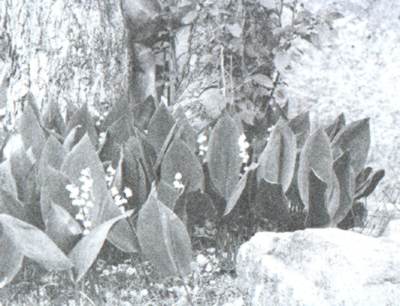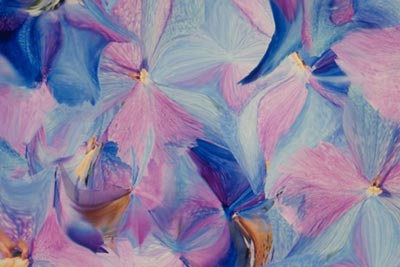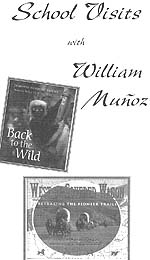| Photography | U.S.A. | ||||||||||||||||||||||||||||||||||||||||||||||
BAFA © 2010. All material here is copyrighted. See conditions above. |
William Muñoz photographer, U.S.A.
|
|
Say: Nature in its essence is the embodiment of My Name, the Maker, the Creator. Its
manifestations are diversified by varying causes, and in this diversity there are signs for men of
discernment. Nature is Godís Will and is its expression in and through the contingent world. It is
a dispensation of Providence ordained by the Ordainer, the All-Wise.
Baháíuílláh
|
|
I suspect that from an early age I was fascinated by the camera. My father was an avid photographer;
he took shots mostly of the family. I must have shown an interest, because my parents gave me a
Yashica 35mm camera for high school graduation. The next year (1966-67), our family lived in Paris
and I photographed a lot that year - enough to get me hooked completely...
|

|
...Deciding to pursue photography full time was easy. Sandy was working full time, so there was no
financial pressure. This gave me the chance to find myself in this difficult and competitive but
exciting field. | |
 Horse in snow, photograph by
Horse in snow, photograph byWilliam Muñoz, U.S.A. | I received a call from Dorothy Patent, a local author of children´s books. She needed breed pictures for a book she was working on. When she gave me the list of needs, I only had one or two but told her I would get the shots for her. That fall, we drove around Western Montana visiting horse people, with me getting most of the shots for the book. I recognized that this was an opportunity for me to follow and Dorothy recognized the value of tying the text and photos tightly together in her books. |
|
This led to our being offered a contract in 1981 to produce a book for children called
A Picture Book of Cows. My first book. Sometimes a book will require specific images and Dorothy will give me a list of needs, other books are written around the photos I get. Ideas come from definite things. A good example is the book about the 200th anniversary of the journey of Lewis and Clark across the North American continent. |
 Calder Sculpture, Chicago, photograph by
Calder Sculpture, Chicago, photograph byWilliam Muñoz, U.S.A. |
 Delightful, photograph by
William Muñoz, U.S.A.
Delightful, photograph by
William Muñoz, U.S.A.
|
This journey explored the vast area that President Thomas Jefferson had recently purchased from
France known as the Louisiana Purchase. In the ensuing years this area was explored and eventually
settled by the European Americans, ultimately becoming 11 states of the United States of America.
|
|
Other times it comes from something that is simply interesting to us - pigeons, for example, I
raised them when I was young. Once an idea is crystallised in our minds, we approach a publisher
and pitch the idea. Sometimes they jump on it fast, but most of the time it takes up to six months
to get a reply. Once a contract is signed, Dorothy and I discuss a loose structure. In the case of
Lewis and Clark, I am in the process of reading everything I can on the journey so I am intimately
familiar with the imagery they mention in their Journals. I will then travel to the necessary places
to make photographs. I may have a preconceived notion of what I want but I always make certain I am
open to the unexpected. These often are the shots that make a book great. I shoot two basic styles:
editorially and artistically. The editorial shot is an attempt to eliminate 200-300 words from the
text. This allows Dorothy to use the space for something else. The artistic shots are those that
evoke emotion. Often the two blend. My work is published by various publishing houses. They do all the sales. I travel to 20-25 art fairs a year across the USA to sell prints. Some prints are of images in books, but for the most part they are a separate collection of work. Selling is such a different form of activity from shooting, but I find out what people are reacting to and am inspired by this to some extent. I try not to be too driven by market concerns, but one needs to eat...  Photograph by William Muñoz, U.S.A. I believe that art is meant to be shared with others. Until it is shared it is not art. Once shared, it is no longer the artistís work. Oh, they still have the copyright, but it is in the public domain. The public will do with it what it pleases. It may take decades to be appreciated or it may be an instant hit, or perhaps it will never reach more than a handful of people. But in the process of reaching a person, it will give a positive forward meaning to life for that person. Art should lead society in a positive direction, pointing toward the future aesthetic. There are many expressions that are only reflections of life and society, while these are valid, they are not, by my definition, art. For me, producing something of high quality for children is something that is going to benefit humanity, since in some small measure my work may influence some child who goes on to astonish us all. |
Programs by William Muñoz
Books illustrated with photos by William Muñoz Over 50 titles. Here are just a few. Back to the Wild, 1996, Harecourt Brace Publishing. West by Covered Wagon, recovering the pioneer trails, 1995, Walker, NY. Eagles of America, 1995, Holiday House, NY. A Horse of a Different Color, 1988, Dodd Mead and Co., NY. William can be contacted at: wamphoto@sisna.com |

|

|
|
Arts Dialogue, Dintel 20, NL 7333 MC, Apeldoorn, The Netherlands email: bafa@bahai-library.com |